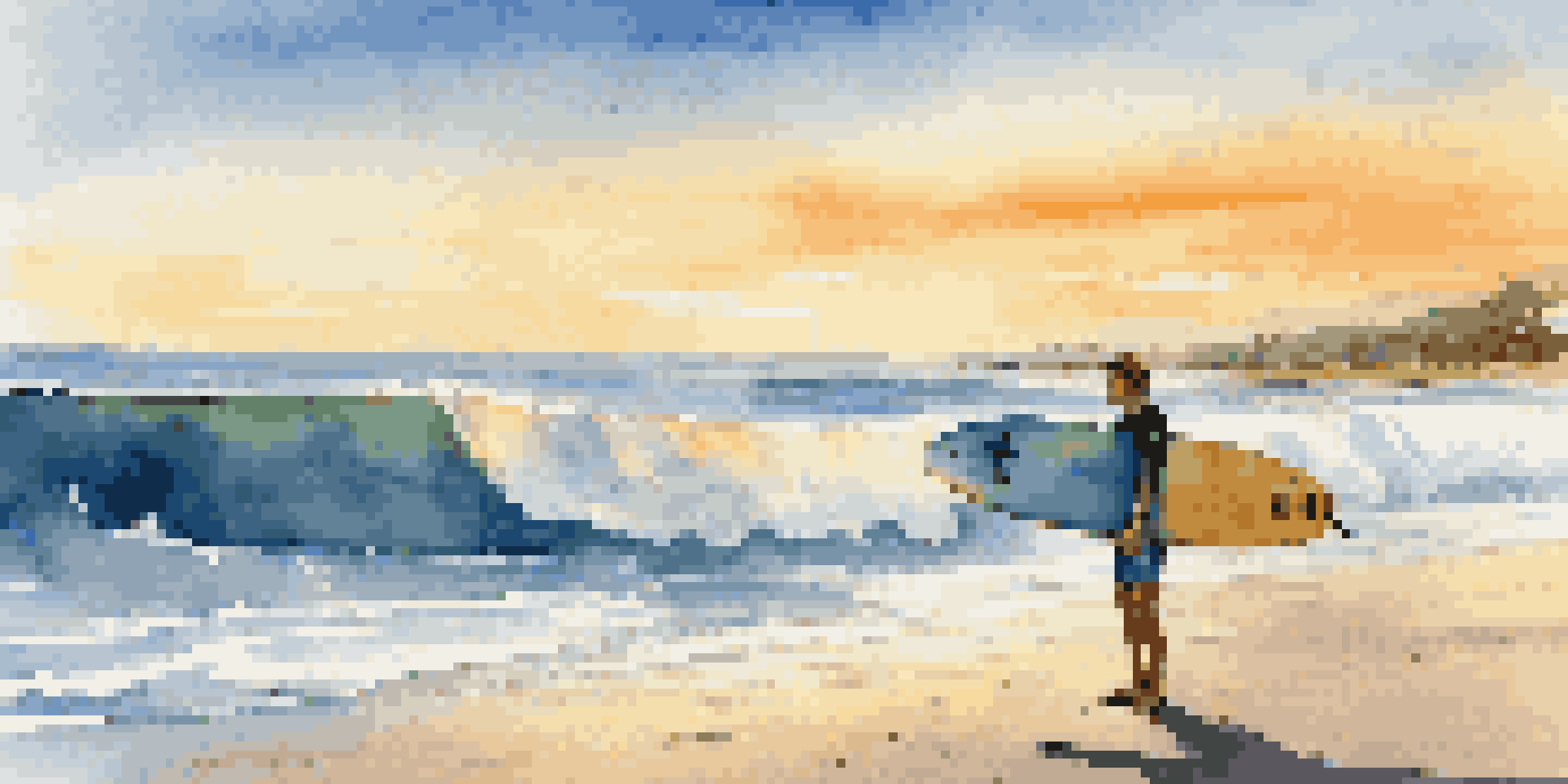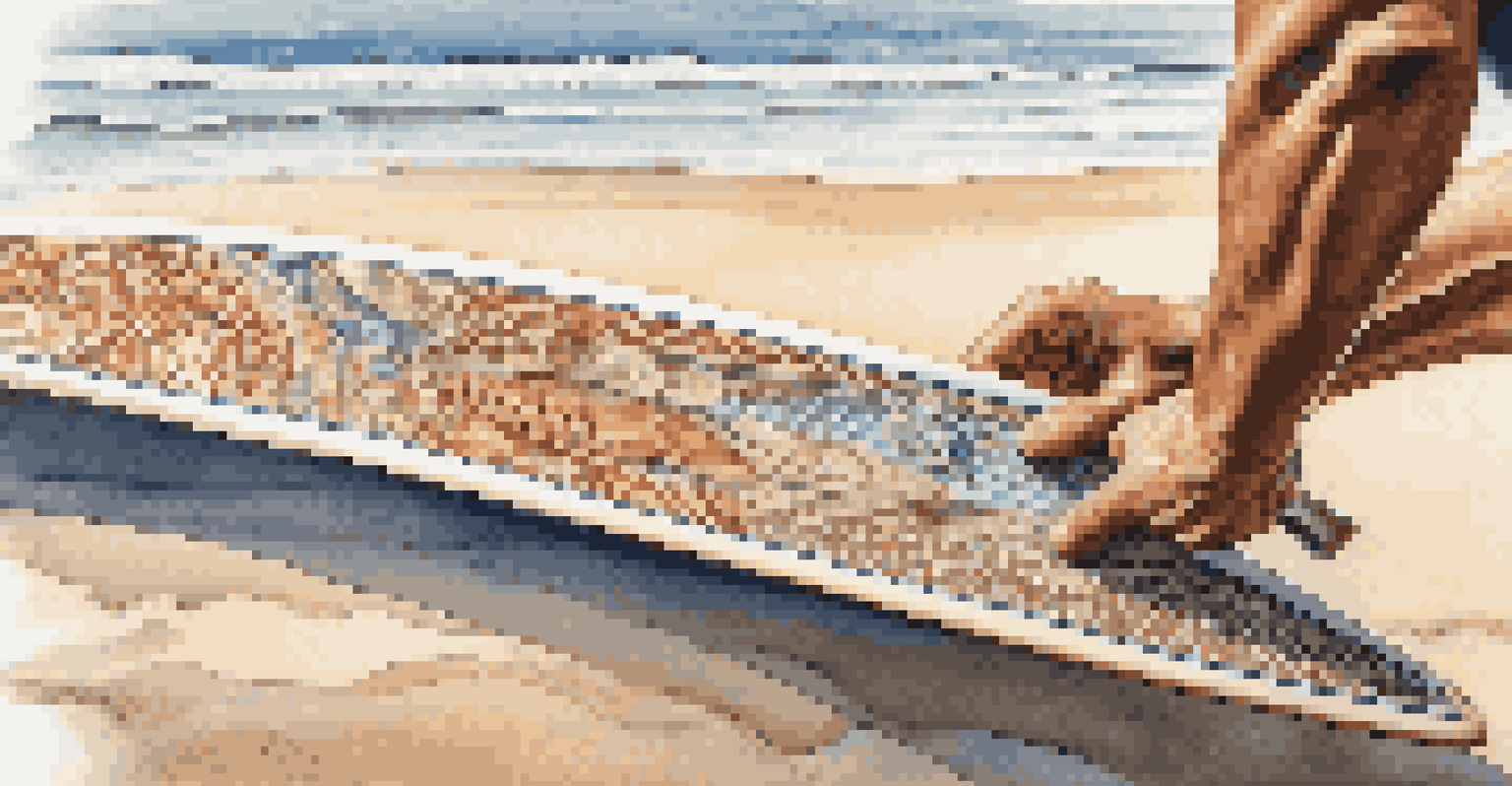Surfboard Rentals: What to Know Before You Ride

Understanding Different Types of Surfboards Available
When it comes to surfboard rentals, knowing the types available is crucial. You’ll encounter shortboards, longboards, and funboards, each catering to different skill levels and wave conditions. Shortboards are great for advanced surfers looking to perform tricks, while longboards offer stability for beginners. Funboards, on the other hand, provide a happy medium, perfect for those still honing their skills.
Surfing is like a relationship. You have to be willing to work at it to get the most out of it.
Each board type has its unique characteristics, such as length and shape, which influence how they perform in the water. For instance, shortboards are typically under six feet long, making them agile for quick turns. In contrast, longboards can range from eight to ten feet, providing better balance and a smoother ride on small waves. Understanding these differences can help you choose the right board for your experience and the waves you'll be riding.
If you’re unsure which board to rent, don’t hesitate to ask the rental shop staff for their recommendations. They are usually well-versed in local surf conditions and can guide you to the best board based on your skill level and the day's surf. Remember, the right surfboard can significantly enhance your surfing experience, making it more enjoyable and less frustrating.
Choosing the Right Surfboard Size for Your Skill Level
Selecting the right size surfboard is essential for a great surfing experience. Generally, beginners should opt for larger boards, as they provide better stability and buoyancy. A board that is too small can be challenging to balance on, leading to a frustrating experience in the water. A good rule of thumb is to choose a board that's about your height or longer.

As you progress in your skills, you can gradually move to smaller boards. Intermediate surfers often find that a board size that reaches their chin or nose offers the right balance between maneuverability and stability. This transition allows for more advanced techniques without sacrificing too much control.
Choose the Right Surfboard Type
Understanding the types of surfboards—shortboards, longboards, and funboards—helps you select the best fit for your skill level and wave conditions.
If you're still unsure about the right size, many rental shops offer sizing charts based on your height and weight. Take advantage of this resource to find a board that suits you best. Remember, a better fit can make a world of difference when you're out there catching waves.
Checking the Condition of Your Rental Surfboard
Before heading out, it’s vital to inspect the surfboard you’re renting. Look for any visible damages, such as dents, cracks, or delamination, which can affect its performance. A well-maintained board not only rides better but also enhances your safety in the water. If you find any issues, don’t hesitate to ask for a different board.
The best surfer out there is the one having the most fun.
Pay attention to the fins and leash as well; these are essential for control and safety. Ensure the fins are securely attached and not damaged, as they help improve maneuverability. The leash should be in good condition, as it keeps the board tethered to you, preventing it from drifting away if you wipe out.
Taking a few moments to thoroughly check your board can save you from potential problems once you're in the water. A little diligence upfront leads to a much more enjoyable surfing session, allowing you to focus on catching waves rather than worrying about equipment issues.
Familiarizing Yourself with Local Surf Conditions
Understanding local surf conditions is a key part of a successful day on the waves. Different beaches can have varying currents, tides, and wave sizes that influence your surfing experience. Before you head out, take some time to research the local surf report, which provides information about wave height, wind direction, and tide times.
If you're at a new beach, don’t hesitate to ask fellow surfers or rental shop staff about the best spots for your skill level. Locals often have invaluable insights, such as which areas have the most consistent waves or where to avoid dangerous currents. This knowledge can help you find the right place to enjoy your surf without unnecessary risks.
Inspect Your Rental Surfboard
Checking your rental surfboard for damages and ensuring the fins and leash are in good condition is crucial for a safe and enjoyable surfing experience.
Additionally, being aware of the weather forecast can enhance your experience. Clear skies and mild winds generally lead to better surfing conditions. So, check the forecast and plan your surf session during optimal conditions for the best experience possible.
Understanding Rental Policies and Fees
Before renting a surfboard, it's important to understand the rental policies and associated fees. Most rental shops have specific guidelines regarding the duration of the rental, insurance coverage, and any potential deposit requirements. Familiarizing yourself with these policies will help you avoid any unexpected surprises at checkout.
Additionally, be aware of any fees for damages or late returns. Some shops offer insurance options for a small fee, which can protect you against accidental damage. If you’re a beginner, considering this option can provide peace of mind as you learn the ropes.
Taking the time to read through the rental agreement ensures you’re fully informed about your responsibilities and liabilities. This way, you can focus on enjoying your surfing experience without worrying about hidden costs or policies.
Preparing for Your Surfing Experience: Gear and Essentials
Preparing for a day of surfing goes beyond just renting a board; it's about having the right gear and essentials. A well-fitted wetsuit is crucial for comfort and warmth, especially in cooler waters. Make sure to choose a wetsuit that fits snugly but allows for easy movement—this will keep you comfortable while paddling and riding waves.
In addition to a wetsuit, don’t forget essentials like sunscreen, a rash guard, and water shoes. Sunscreen protects your skin from harmful UV rays, while a rash guard can prevent chafing when you’re paddling. Water shoes provide grip and protection against rocky bottoms, enhancing your overall safety.
Know Local Surf Conditions
Familiarizing yourself with local surf conditions and asking for advice from locals can enhance your surfing experience and ensure safety on the water.
Lastly, pack some snacks and water to stay hydrated and energized throughout your surf session. Surfing can be physically demanding, and having fuel on hand will help keep you going strong. Being prepared with the right gear and essentials sets you up for a fantastic day on the waves.
Respecting Surf Etiquette and Other Surfers
When you hit the waves, understanding surf etiquette is essential for a smooth and enjoyable experience. Surfing can be a crowded sport, and being respectful to fellow surfers ensures everyone has a good time. Basic rules include waiting your turn, not dropping in on someone else's wave, and maintaining a safe distance from others.
If you're a beginner, take time to observe the local surfers and learn from their actions. This can provide valuable insights into the local etiquette and how to navigate crowded waters. Remember, every surfer was a beginner once, and respecting the lineup will earn you goodwill from others.

Additionally, always be aware of your surroundings. This means looking out for other surfers, swimmers, and any hazards in the water. Keeping an eye on your environment helps prevent accidents, ensuring a safe and enjoyable surfing experience for everyone involved.